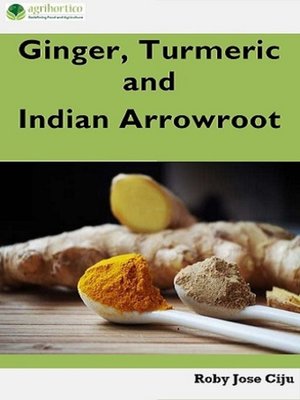
Sign up to save your library
With an OverDrive account, you can save your favorite libraries for at-a-glance information about availability. Find out more about OverDrive accounts.
Find this title in Libby, the library reading app by OverDrive.



Search for a digital library with this title
Title found at these libraries:
| Library Name | Distance |
|---|---|
| Loading... |
This small book explains in detail growing practices and health benefits of three prominent members of Ginger family such as ginger, turmeric and Indian arrowroot. Ginger is tropical and subtropical in its growth habit. It is grown for its aromatic rhizomes which are used as a vegetable, a spice and as a traditional medicine. Ginger rhizomes are often called 'ginger root' though it is not actually a root. As in case of all plants belonging to ginger family, turmeric also prefers tropical and subtropical moist climate for its growth. Turmeric plant is an herbaceous perennial crop mainly grown for its edible rhizomes which are used as an important spice, condiment and dye. Turmeric is also known as 'Indian saffron'. Indian arrowroot is cultivated as a root crop just like ginger and turmeric for extracting arrowroot powder. Arrowroot powder is believed to have numerous medicinal properties.







